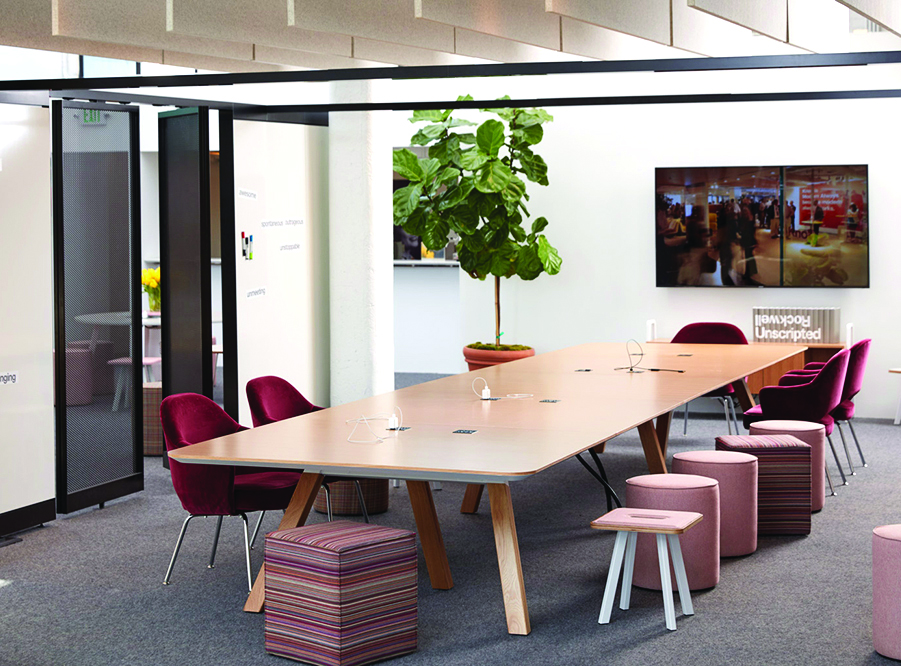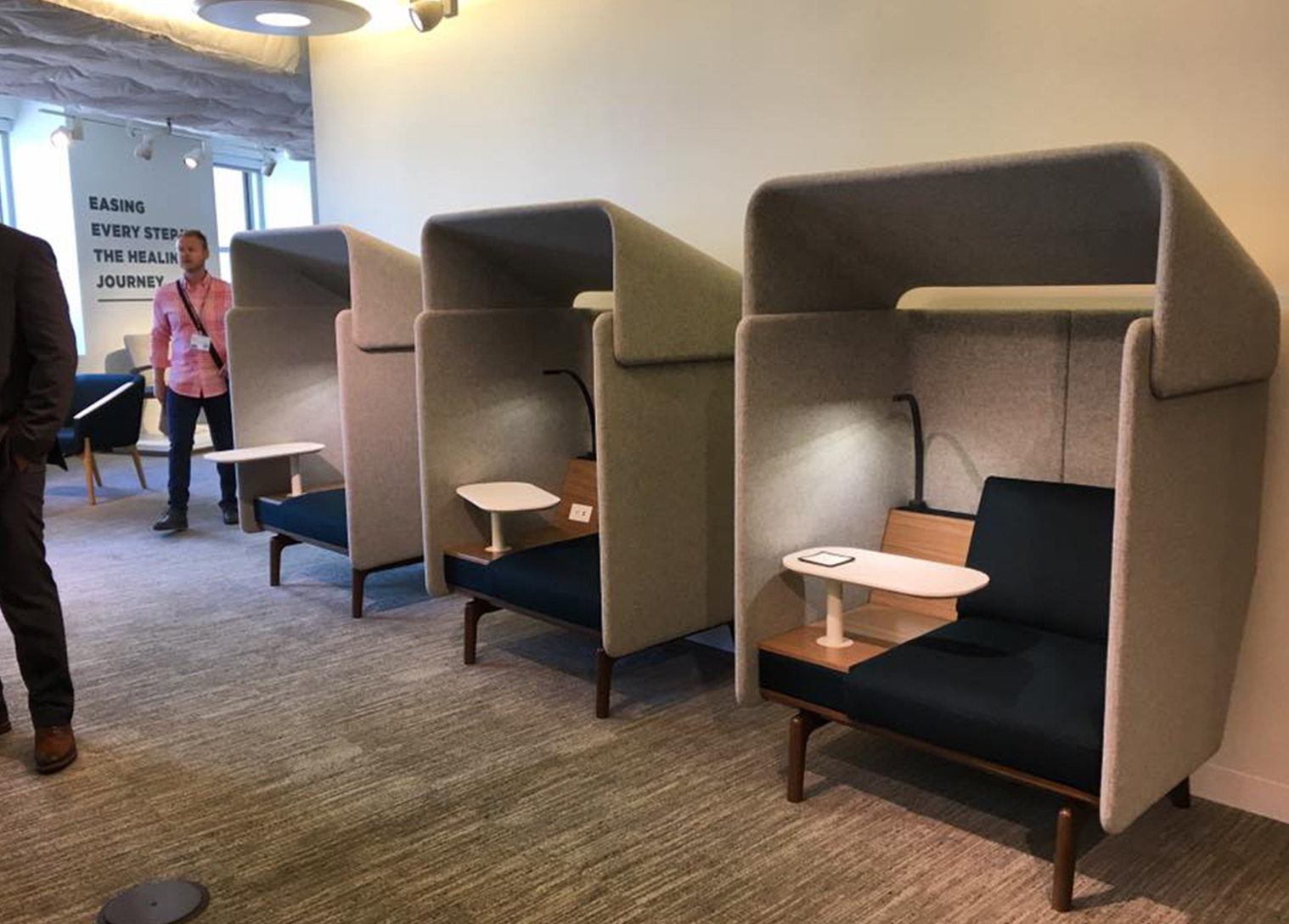
Courtesy drb Business Interiors
By Jill Nagy
Today’s offices often combine open areas with private conference space, may be furnished more like a living room or cafe than a traditional office, and allow for people to work either sitting or standing up, according to two Saratoga office designers, Lisa Boyle of the Boyle Group and Dorothy Rogers-Bullis of drb Business Interiors.
Boyle sees a trend toward “well-certified buildings,” similar to LEED-certified but focused on the health needs of the people inside the building.
“It’s a huge trend,” she said.
It may include ergonomically designed chairs, stand-up desks, task lighting that focuses on the work surface, locally controlled heating and cooling, and a lot of greenery. She noted that millenials, who now constitute a third of the workforce, are very concerned about their health and well-being.
While open-plan designs are still popular, people also need “little islands of retreat,” according to Boyle. “People my age or older want to have their own space,” she said. “Younger workers can work anywhere . . . They can move around an office space like you move around your home.”
Rogers-Bullis also sees movement toward hybrid spaces.
“In the past, everyone wanted to do open plan and only open plan,” she said, but now they look for “a little bit of everything,” including open and private collaboration areas, private conference space, work stations accommodating both seated and stand-up workers. There is more emphasis on lighting and sound levels.

Courtesy the Boyle Group
They agree that every office design project is different, depending upon the type of business, type of building, and individual needs. And there is still demand for traditionally designed offices.
Rogers-Bullis points to attorneys, particularly downtown Albany attorneys, as still wanting the old, dark wood look. “They want their senior attorneys to have their own private locked offices.”
She pushes very gently, she said. “I may suggest that they lighten up the wood a little bit. I want people to be happy but also able to attract younger employees.”
Boyle enjoys the change in the way people think about their work spaces. “It’s all good,” she said, “It’s fun. Office design is a lot more fun than it was 10 years ago.”
Rogers-Bullis agrees, commenting “We really enjoy what we do.”
Rogers-Bullis’s company provides a service from conception and design, through procurement (they carry 250 lines of furniture), to installation to warranty and, when necessary, repairs. Their overall aim, she said, is to provide the right products to make people more productive.
Boyle provides a similar service, but terms herself a manufacturers’ representative. She does not sell furniture directly but through affiliated dealers.
“I represent a bunch of different manufacturers,” she said, and is “kind of a go-between.” She tries to encourage architects and designers to specify her brands, to make them aware of options and keep them up to date on changes. She may, for example, stop in to demonstrate a new chair.
The Boyle Group has been in business for seven and a half years. They are located at 62 Milton Ave. in Ballston Spa.
The drb office is located in downtown Saratoga Springs at 153 Regent St., the former Skidmore College Little Theater.
